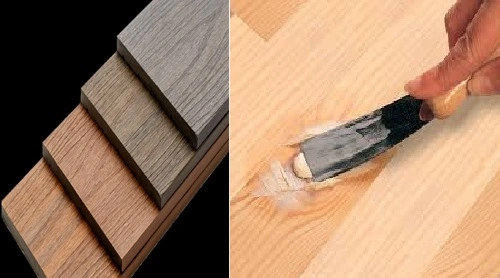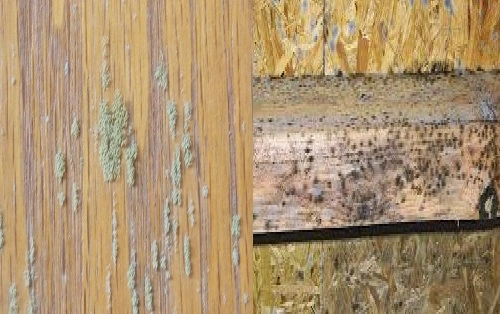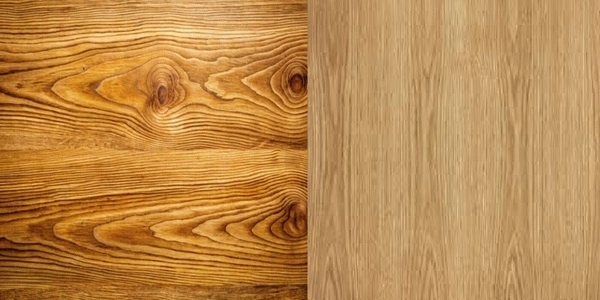When it comes to repairing imperfections in woodwork, furniture, or construction projects, two popular products are often used: plastic wood and wood filler. While these terms are sometimes used interchangeably, they are not the same. Both serve specific purposes, and choosing the right one can make the difference between a flawless repair and a subpar result.
In this article, we will break down the differences between plastic wood and wood filler, compare their strengths and weaknesses, and guide you on when to use each product for the best outcome.
What is Plastic Wood?
Plastic wood is a durable, solvent-based or water-based product designed to replicate the strength and finish of real wood. Often referred to as “wood putty” or “synthetic wood,” it’s made with wood fibers, resin, and binding agents that harden into a solid mass after application.
Key Features of Plastic Wood:
- Mimics the texture, hardness, and color of real wood.
- Available in pre-tinted colors that match common wood species (oak, walnut, maple, etc.).
- Hardens into a strong, durable surface that can withstand sanding, staining, and painting.
- Best suited for smaller repairs, such as filling cracks, holes, and scratches in finished wood surfaces.
What is Wood Filler?
Wood filler is a versatile product made from wood fibers, cellulose, or synthetic materials suspended in a binding agent. It is primarily designed to fill holes, cracks, or gaps in wood, especially on unfinished surfaces. Wood fillers can be water-based or solvent-based and harden quickly once applied.
Key Features of Wood Filler:
- Best used on unfinished wood surfaces where repairs need to be sanded and finished.
- Hardens to a smooth texture that can be sanded, stained, or painted.
- Comes in various formulations, including stainable fillers for matching wood tones.
- Suitable for larger repairs and gaps, especially in raw wood or woodworking projects.
Plastic Wood vs. Wood Filler: Key Differences
While both products fill gaps and imperfections in wood, they differ in formulation, application, and best-use scenarios.
| Feature | Plastic Wood | Wood Filler |
|---|---|---|
| Composition | Resin, wood fibers, and binding agents | Wood fibers, cellulose, or synthetic binders |
| Texture | Dense, hard, mimics real wood | Smooth and more pliable |
| Best Use | Small repairs on finished wood surfaces | Filling gaps and holes in unfinished wood |
| Hardness | Hardens to a durable, dense finish | Hardens but less dense than plastic wood |
| Sandability | Can be sanded for a smooth finish | Easily sanded to a flat surface |
| Staining/Painting | Can be stained but may not absorb evenly | Designed to accept stain and paint well |
| Flexibility | Limited flexibility; can crack if stressed | More flexible; resists cracking |
| Dry Time | Longer drying time, especially solvent-based | Faster drying, especially water-based |
| Water Resistance | Moderately water-resistant once cured | Varies; some water-based fillers need sealing |
| Price | Generally more expensive | More affordable |
When to Use Plastic Wood
Plastic wood is ideal for projects where durability and a close match to the wood grain are important. Since it hardens into a tough, dense material, it’s perfect for repairs on finished or stained wood surfaces where strength is critical.
Common Applications for Plastic Wood:
- Filling Small Holes and Cracks: Use plastic wood to repair nail holes, screw holes, and minor cracks in furniture, baseboards, trim, and doors.
- Touching Up Finished Surfaces: Plastic wood blends well with stained or painted wood, especially when you need pre-matched color options.
- Outdoor Repairs: Some solvent-based plastic woods offer moderate water resistance, making them a decent option for small outdoor repairs on furniture or trim.
- Durable Fixes: When repairs need to withstand wear and tear, plastic wood provides strength and longevity.
Pro Tip: While plastic wood can be stained, it does not absorb stain as evenly as real wood. If stain matching is critical, test the product on scrap wood first.
When to Use Wood Filler
Wood filler excels in projects where sanding, staining, and painting are part of the finishing process. It is best used on unfinished wood surfaces or woodworking projects requiring seamless repairs.
Common Applications for Wood Filler:
- Large Gaps and Cracks: Wood filler can fill larger holes, cracks, or voids in raw wood, such as furniture, floors, or cabinets.
- Unfinished Wood Repairs: Use wood filler to prep unfinished wood surfaces for staining, painting, or sealing.
- Woodworking Projects: For custom woodwork like cabinets, shelves, or decorative items, wood filler is ideal for hiding joints, screw holes, or imperfections.
- Flexible Fixes: In areas where wood may expand or contract (due to temperature or humidity changes), wood filler is less likely to crack compared to plastic wood.
Pro Tip: Choose a stainable wood filler if you plan to stain the surface. These fillers are specially designed to absorb stain and blend well with surrounding wood grain.
Which One is Better for Your Project?
The choice between plastic wood and wood filler depends on your specific needs:
- For Finished Surfaces: Choose plastic wood for repairing small holes, dents, and cracks in stained or painted wood. It hardens to a durable finish and can mimic the color and grain of real wood.
- For Unfinished Wood: Choose wood filler for larger repairs or woodworking projects that require sanding, staining, and finishing. It is easy to work with and blends seamlessly with raw wood.
- For Outdoor Use: Opt for solvent-based plastic wood for small repairs on outdoor furniture or trim, as it offers better moisture resistance.
Final Thoughts
Both plastic wood and wood filler are essential tools for wood repairs, but knowing when to use each will save you time and ensure professional-looking results.
- Plastic wood is your go-to choice for smaller, durable repairs on finished surfaces that require a dense, solid material.
- Wood filler, on the other hand, shines in larger repairs or unfinished wood projects where sandability and stain absorption are critical.
By selecting the right product for your project, you can ensure your repairs not only last but also look seamless, whether you’re fixing furniture, finishing woodwork, or improving the look of your home.


